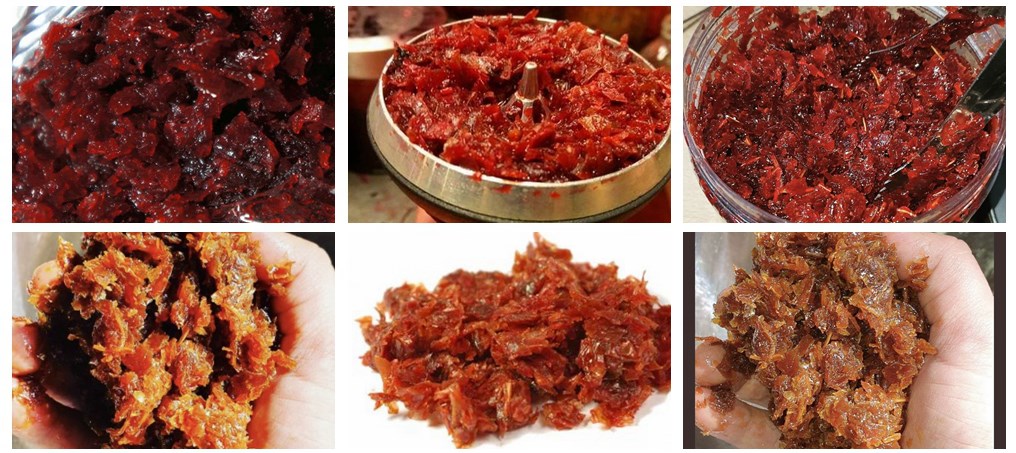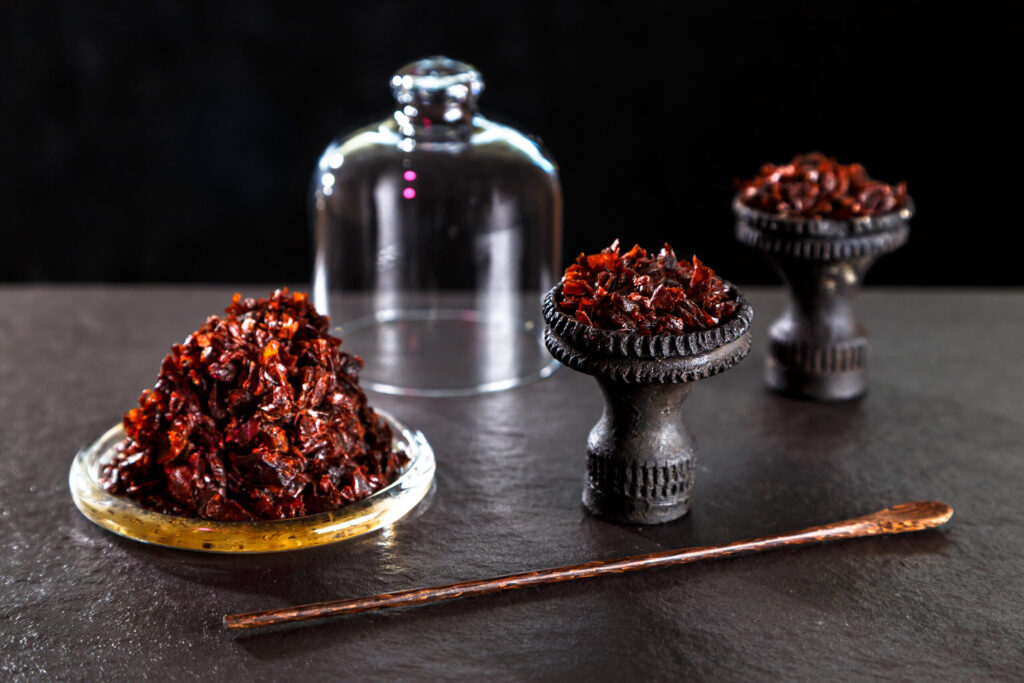The molasses industry is an ancient art in which craftsmanship and knowledge blend to produce a product that meets the expectations of smoking lovers and molasses. The origin of the molasses industry dates back many centuries, as its techniques and methods evolved over time to a high degree of professionalism and diversity at present. In this article, we will explore the process of the molasses industry and the basic steps to follow to produce a high-quality product. We will learn about the ingredients used and techniques used and how to achieve the perfect flavors and balance in the molasses.
We will start by explaining the basic ingredients used in the molasses industry. The ingredients vary according to manufacturers’ preferences and the types of molasses they want to produce. Typically, the main ingredients include processed tobacco and a liquid processor that is added to tobacco to impart flavor and moisture. Glycerin and sugar diameter may be used to achieve optimal moisture and fumigation effects.

It is worth noting that the high quality of tobacco plays a crucial role in the quality of the final molasses. High-quality tobacco leaves should be selected and carefully processed to eliminate impurities and ensure rich and pure flavor. In this article we will discuss the molasses industry through the following points:
- What are the materials used in shisha tobacco production?
- How is the process of making shisha tobacco carried out?
- What are the techniques followed in shisha tobacco production?
- How are distinctive flavors and the perfect balance achieved in shisha tobacco?
What are the materials used in molasses production?
In shisha tobacco production, a variety of materials are used to achieve distinctive flavors and moisture. Here is a list of some common materials used in shisha tobacco production:
- Tobacco
Tobacco is the main component in molasses production. Specific types of tobacco leaves are chosen to meet quality standards and desired flavor.
- Liquid Molasses (Syrup and Glycerin)
Syrup and glycerin are used to provide moisture and flavor to the tobacco. Typically, the liquid molasses is made from a blend of glycerin and sugar syrup.
- Aromatic Ingredients and Flavors
Fruit extracts, natural fragrances, and artificial flavors are used to add distinctive flavor and aroma to the molasses, achieving the desired taste. Some common molasses flavors include mint, apple, berry, lemon, vanilla, and various spices.
- Enhancers and Stabilizers
Some enhancers and stabilizers may be used to improve the characteristics of the molasses, such as moisture retention and burn consistency. These may include moisture stabilizers or fermenting agents.
It should be noted that the composition of materials used in molasses production can vary among manufacturers and different brands. The specific combination and proportions of the materials used contribute to the unique flavor and branding of each molasses company, following their secret recipe.
How is the process of making molasses carried out?
The process of molasses production involves several steps to achieve a high-quality final product. Here are the main steps in molasses manufacturing:
- Tobacco Selection
The process begins with selecting the appropriate quality of tobacco for molasses production. High-quality tobacco leaves are chosen, and processed to remove impurities and enhance flavor.
- Tobacco Preparation
The selected tobacco leaves undergo preparation for further processing. This may include steaming or moistening the leaves to eliminate stiffness and make them ready to absorb flavors and moisture.
- Ingredient Addition
Other ingredients used in molasses production, such as glycerin, sugar syrup, fruit extracts, mint, and enhanced flavors, are added. The composition and proportions of ingredients vary based on the desired recipe and the manufacturer’s preference.
- Fermentation
After the ingredient addition, the tobacco undergoes fermentation. It is placed in sealed containers for a specific period, allowing the components to react and enhance the flavor. Temperature and humidity control during fermentation are crucial to achieving the desired results.
- Filtration
After the fermentation period, the molasses is filtered to remove solid particles and impurities. This is done using filters or fine fabrics to obtain pure tobacco free from impurities.
- Packaging
The pure molasses is packaged in suitable containers. Packaging choices are made to preserve the quality, taste, and flavor of the molasses for an extended period. Packaging options may include storage containers such as glass jars or plastic containers.
The molasses manufacturing process should adhere to high-quality standards and comply with local laws and regulations related to molasses product manufacturing. It also requires careful monitoring of the production process to ensure the quality and safety of the final molasses product. It should be noted that there can be variations in the manufacturing process between different manufacturers and even different types of molasses, as it largely depends on the individual choices of manufacturers and the recipes used.
In summary, molasses production requires a precise and professional process to achieve high quality and the perfect balance of flavors and aromas. It involves selecting the right tobacco, adding suitable ingredients, fermentation, filtration, and careful packaging.
What are the techniques followed in molasses production?
When manufacturing molasses, several techniques are followed to ensure the production of a high-quality and flavorful product. Here are some of the techniques commonly employed in molasses manufacturing:
- Tobacco Preparation
The tobacco is prepared through processes such as drying, removal of undesirable leaves, and giving it the desired smoothness. This may also involve steaming or moistening the leaves to achieve the best texture and pliability.
- Ingredient Blending
The tobacco is carefully blended with liquid sugar syrup, glycerin, and other ingredients to achieve an even and homogeneous distribution of flavors and moisture. Specialized machines are used for this process to ensure the perfect balance of ingredients.
- Fermentation
The blend is placed in sealed containers and fermented for a specific period. This process may involve low heat or bio-fermentation using specific bacteria to enhance flavor and improve the properties of the molasses.
- Filtration and Purification
After the fermentation process is complete, the molasses is filtered to remove impurities and undesired particles. This is done using fine filters or specialized fabrics to obtain pure and impurity-free molasses.
- Quality Control
Multiple tests and inspections are conducted to ensure the quality of the produced molasses. These tests include flavor and aroma examination, moisture measurement, and verification of compliance with health standards, as well as local and international regulations pertaining to molasses production.
- Innovation and Development
The molasses industry continues to innovate and develop new and diverse recipes to meet market needs and preferences. Advanced techniques and ongoing research are used to enhance the quality of molasses and create unique and innovative flavors.
- Packaging
The packaging process is an important aspect of molasses manufacturing. Suitable and appealing packaging is chosen to maintain the quality of the tobacco and provide proper protection. Leak-proof, light-proof, and moisture-resistant packaging are employed to preserve the taste and flavor of the molasses.
All these steps and techniques must be implemented with high standards to ensure the manufacturing of excellent-quality shisha tobacco that complies with health and legal requirements. The use of advanced techniques, innovation, and adherence to good manufacturing practices contribute to the production of shisha tobacco that stands out in terms of quality, taste, and aroma.
How are distinctive flavors and the perfect balance achieved in molasses?
To achieve distinctive flavors and the perfect balance in molasses, several steps and techniques are followed during the manufacturing process. Here are some important factors that contribute to achieving this:
- Tobacco Selection
Tobacco is the main ingredient in molasses, so it’s important to choose varieties known for their distinct flavor and aroma. The selection involves choosing appropriate strains and high-quality leaves to achieve the best flavors.
- Molasses, Glycerin, and Aromatic Ingredients
Liquid molasses made from a blend of glycerin and sugar syrup is used to add moisture and flavor to the tobacco. Aromatic ingredients and different flavors are added to give the molasses its distinctive taste. Fruit extracts, natural fragrances, and artificial flavors are used to achieve the perfect flavor balance.
- Ratios and Even Distribution
Attention is given to the even distribution of ingredients and flavors in the molasses. Ratios are carefully adjusted to ensure a balanced composition and avoid significant variations in flavor.
- Fermentation and Filtration
The fermentation process plays a crucial role in developing flavors and adding depth and complexity to the molasses. During the fermentation period, chemical reactions occur that affect the flavors and aroma. Afterward, the molasses is filtered to remove impurities and ensure the purity of the final flavor.
- Innovation and Research & Development
Innovation, research, and development play a vital role in achieving distinctive flavors in molasses. Exploring new compositions and recipes, using innovative techniques and high-quality materials contribute to achieving the perfect balance of ingredients and enhancing the flavor and aroma.
- Consumer Preferences
Consumer preferences are also taken into account in molasses manufacturing. Studying market needs, consumer preferences, and expectations helps in achieving the distinctive flavors that consumers are seeking.
By employing these techniques and best practices in molasses manufacturing, it is possible to achieve a perfect balance of flavors and provide a satisfying and distinctive experience for shisha consumers. These factors are main in developing high-quality molasses products with exceptional flavors that meet customer expectations.
In the end, it can be said that molasses manufacturing is a complex and intricate process that requires expertise and skill to achieve distinctive flavors and the perfect balance. Among the well-known brands in the world of molasses, Debaj stands out.
Debaj premium molasses products are characterized by their high quality and diverse, well-balanced flavors. Debaj Molasses Company utilizes advanced techniques and high-quality materials to ensure an exceptional and satisfying experience for shisha enthusiasts. Debaj molasses products reflect the care and attention put into every step of the production process.

When you purchase Debaj molasses products, you are investing in a unique and exceptional experience. You will enjoy wonderful flavors and a perfect balance that meets your expectations. Whether you are a fan of traditional flavors or prefer innovative experiments, you will find in Debaj’s range of products something that suits your needs. Therefore, we proudly encourage you to choose Debaj molasses products to enjoy a distinctive and wonderful experience, where you will find the perfect balance and amazing flavors that add moments of relaxation and unique pleasure to your life. Enjoy the taste of quality and embark on a journey of shisha enjoyment with Debaj.


